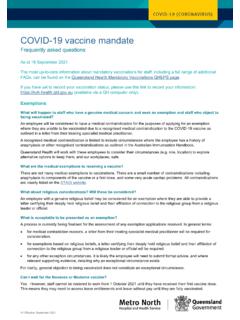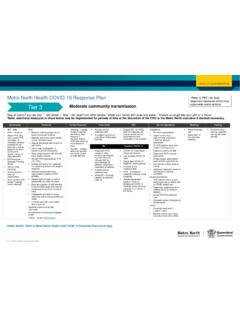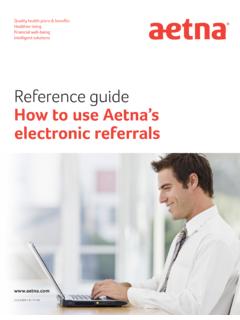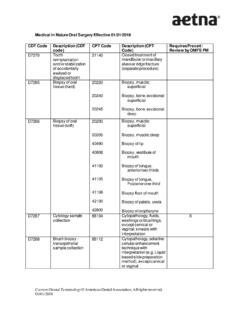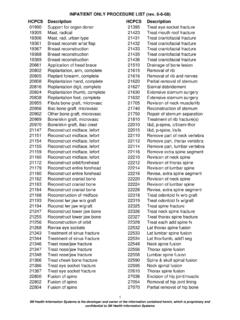Transcription of Ehlers-Danlos Syndrome Information Sheet
1 V3 Effective: September 2019 Review: September 2020 Ehlers-Danlos Syndrome Information Sheet Hypermobile Ehlers-Danlos Syndrome Joint hypermobility is common in the general population and often familial. The diagnosis of hypermobile Ehlers-Danlos Syndrome (hEDS) remains a clinical one as the genetic basis is poorly understood. Because of this, we do not offer genetic testing to patients with hEDS and the clinical diagnosis does not need to be made by a Clinical Geneticist. To assist with making a clinical diagnosis of hEDS, the 2017 International Diagnostic Criteria can be found at The Ehlers-Danlos Society website ( ). In general treatment for hEDS is designed to alleviate symptoms and can include physiotherapy, psychological support for chronic fatigue and for pain management, pain medication tailored to symptoms, and appropriate therapy for any associated stomach or bowel problems. Low impact exercise is advisable. Management of symptoms should be through referral to relevant medical specialists.
2 Guidelines for managing patients with hEDS, as well as the clinical features and natural history, can be found at The Ehlers-Danlos Society website ( ). Other types of Ehlers-Danlos Syndrome There are at least 12 other types of EDS, some of which are associated with life-threatening complications (such as arterial or organ rupture). Clinical genetics assessment and testing is available for other types of EDS, as well as other connective tissue disorders associated with arterial dissection/aneurysm (such as Marfan Syndrome or Loeys-Dietz Syndrome ). Features that would prompt a referral to Clinical Genetics include (but are not limited to): Extensive widened atrophic scars Significant sagging skin Significant kyphoscoliosis Personal/family history of organ rupture Young onset unexplained arterial dissection Severe progressive cardiac valvular problems Hand and foot deformities Young age unexplained significant or extensive varicosities Recurrent large hernias Recurrent pneumothoraces V3 Effective: September 2019 Review: September 2020 Page 2 of 3 The referral pathway for patients suspected of having other types of EDS can be found below.
3 Further Information regarding the clinical features of EDS types, can be found at The Ehlers-Danlos Society website: #cEDS. If you wish to discuss a potential referral, please contact Genetic Health Queensland on (07) 3646 1686. Genetic referrals for ehlers Danlos Syndrome (EDS) hypermobility type See diagnostic criteria attached YES NO NO YES Associated features of classical, vascular, kyphoscoliotic, arthrochalasia, dermatopraxis, cardiac-valvular, brittle cornea Syndrome , spondylodysplastic, musculocontractural, myopathic or periodontal EDS? Associated features of Marfan Syndrome , Loeys-Dietz or other aortopathy ? Request echocardiography +/- ophthalmic assessment Clinical Genetics referral not indicated for EDS hypermobility type Refer to appropriate medical specialist for management if required Refer to Genetic Health Queensland for genetic advice Refer to other specialists for evaluation of heart/eye/joint/skin findings YES NO NO YES V3 Effective: September 2019 Review.
4 September 2020 Page 3 of 3 ehlers Danlos syndromes (EDS) Major criteria Minor criteria Classic (Type I/II) (Autosomal Dominant) Skin hyperextensibility and widened atrophic scars (necessary criteria) Joint hypermobility Easy bruising Soft doughy skin Skin fragility Molluscoid pseudotumours Subcutaneous spheroids Hernia Epicanthal folds Muscular hypotonia Complications of joint hypermobility Positive family history Vascular (type IV) (vEDS) (Autosomal Dominant) Family history of vEDS Arterial/intestinal/uterine fragility or rupture Carotid-cavernous sinus fistula formation Unusual bruising/unrelated to trauma Thin, translucent skin Characteristic facial appearance Spontaneous pneumothorax Acrogeria (premature ageing of hands and feet) Talipes equinovarus Congenital hip dislocation Early-onset varicose veins (<30 and nulliparous if female)) Hypermobility of small joints Tendon and muscle rupture Keratoconus Gingival recession and fragility Arteriovenous or carotid-cavernous sinus fistula Pneumo (haemo)thorax Positive family history, sudden death in close relative(s) Kyphoscoliotic (type VI) (Autosomal Recessive) Congenital muscular hypotonia Congenital Kyphoscoliosis (both necessary) Generalised joint hypermobility with dislocations/subluxations Tissue fragility, including atrophic scars Easy bruising Arterial rupture Marfanoid habitus Microcornea Osteopenia Arthrochalasia (type VII A and B) (Autosomal Dominant) Congenital bilateral hip dislocation (necessary criteria) Severe generalised joint hypermobility with recurrent subluxations/dislocations Skin hyperextensibility Tissue fragility, including atrophic scars Easy bruising Muscular hypotonia Kyphoscoliosis Mild osteopenia Dermatosparaxis (type VIIc) (Autosomal recessive)
5 Severe skin fragility Characteristic craniofacial features (both necessary) Sagging, redundant skin Excessive bruising Soft, doughy skin texture Premature rupture of membranes Large herniae Marfan Syndrome spectrum disorders ( and ) Marfan Syndrome (Autosomal Dominant) Aortic root enlargement Ectopia lentis Reduced upper segment / lower segment AND increased arm span/height ratios, arachnodactyly with positive thumb/wrist sign, pectus carinatum/excavatum/asymmetric, scoliosis or thoracolumbar kyphosis, hindfoot deformity, flat feet, pneumothorax, scoliosis or thoracolumbar kyphosis, skin striae, reduced elbow extension, myopia, mitral valve prolapse, dural ectasia Loeys-Dietz Syndrome (Autosomal Dominant) Aortic root aneurysm with dissection Generalized arterial tortuosity and aneurysms Systemic features: arachnodactyly, pectus carinatum/excavatum/asymmetric, scoliosis, talipes equinovarus, soft and velvety skin, translucent skin, easy bruising, dural ectasia, highly arched palate/cleft palate, malar hypoplasia, micrognathia, retrognathia, hypertelorism, broad or bifid uvula



